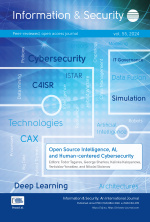Understanding Hybrid Influence: Emerging Analysis Frameworks
Source:
DIGILIENCE 2019,Abstract:
Over centuries countries and alliances in conflict have used all available means at their disposal, in addition to military forces, to gain a competitive edge. ‘Hybrid threat’ or ‘hybrid war’ is a new term designating the coordinated use of military and non-military means, that got traction in the analysis of the 2006 Israel-Hezbollah War and became widely used beyond the professional communities after the 2014 annexation of Crimea by the Russian Federation. One specific aspect of such conflicts is the lack of a clear distinction between ‘war’ and ‘peace’, when a skillful player would apply available means to subjugate the opponent’s will, and thus achieve its political objectives, without fighting. Economic leverage, energy dependencies, ideology, propaganda and disinformation, cyber attacks and corruption are just a few types of means for such diverse—or ‘hybrid’—influence. While using different channels, it is their combined impact that can bring desired effects.
Finding an appropriate response to such hybrid influence requires a good understanding of own vulnerabilities, exposure and actual or potential impact over the public institutions, the economy and the society. This paper looks into emerging frameworks allowing to estimate the impact of hybrid influence and the extent to which they may be used to reflect the actual interdependencies and complexity of modern societies. While combining in various ways empirical data and expert assessments, all these frameworks facilitate the application of risk-aware allocation of limited resources to counter hybrid influence.
This paper is included in the program of DIGILIENCE 2019 and will be published in the post-conference volume.
